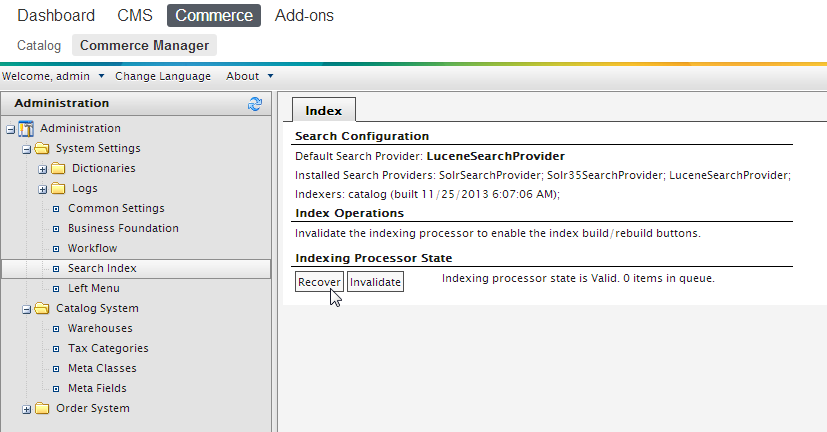Event-driven catalog indexing
This topic briefly describes the event-driven catalog indexing in Episerver Commerce, and how to verify the state of the indexing processor.
How it works
The event-driven model for indexing the catalog ensures that changes to catalog data are automatically updated in the search index. The Indexing Processor State section is located at Commerce > Commerce Manager > Administration > System Settings > Search Index. The Recover and Invalidate buttons manage the system that handle the event-driven indexing. The status indicator displays the state of a queue of catalog entries that need to be re-indexed. If it is invalid, the system does not know the difference between the actual catalog data and the search index.

Click Recover to rebuild the full search index. When the recovery is complete, the state is changed to valid, and changes are automatically pushed into the index. The Recover button does not do anything if the queue state is valid (it will be disabled).
Click Invalidate to clean out the queue and start over. If the queue state is invalid, clicking Invalidate resets the state, and clicking Recover rebuilds the search index. When the state is recovering, it displays a completion percentage of the recovery operation (the information is retrieved from the search provider). When the state is valid again, the handler displays the number of items in the queue; this is the number of catalog entries that need to be indexed. This number can get big after a catalog import, because it re-indexes the changed catalog entries in the background. In most cases, the number is small.
Last updated: Oct 12, 2015
